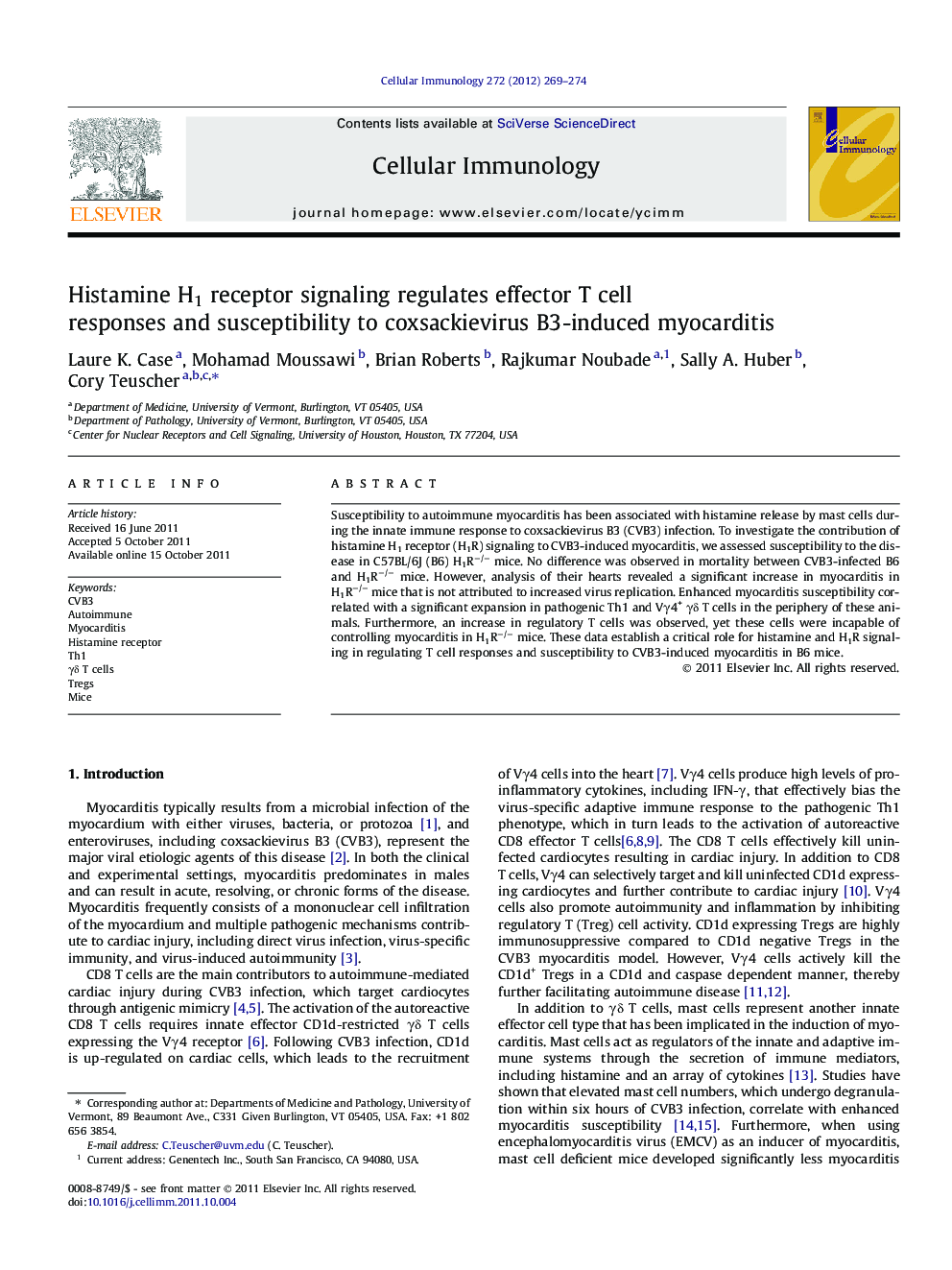| کد مقاله | کد نشریه | سال انتشار | مقاله انگلیسی | نسخه تمام متن |
|---|---|---|---|---|
| 2167397 | 1092327 | 2012 | 6 صفحه PDF | دانلود رایگان |

Susceptibility to autoimmune myocarditis has been associated with histamine release by mast cells during the innate immune response to coxsackievirus B3 (CVB3) infection. To investigate the contribution of histamine H1 receptor (H1R) signaling to CVB3-induced myocarditis, we assessed susceptibility to the disease in C57BL/6J (B6) H1R−/− mice. No difference was observed in mortality between CVB3-infected B6 and H1R−/− mice. However, analysis of their hearts revealed a significant increase in myocarditis in H1R−/− mice that is not attributed to increased virus replication. Enhanced myocarditis susceptibility correlated with a significant expansion in pathogenic Th1 and Vγ4+ γδ T cells in the periphery of these animals. Furthermore, an increase in regulatory T cells was observed, yet these cells were incapable of controlling myocarditis in H1R−/− mice. These data establish a critical role for histamine and H1R signaling in regulating T cell responses and susceptibility to CVB3-induced myocarditis in B6 mice.
► H1R deficient mice are more susceptible to CVB3-induced myocarditis.
► Susceptibility correlates with expansion in pathogenic Th1 and Vγ4+ γδ T cells.
► Tregs are incapable of controlling myocarditis in CVB3-infected H1R deficient mice.
Journal: Cellular Immunology - Volume 272, Issue 2, 2012, Pages 269–274